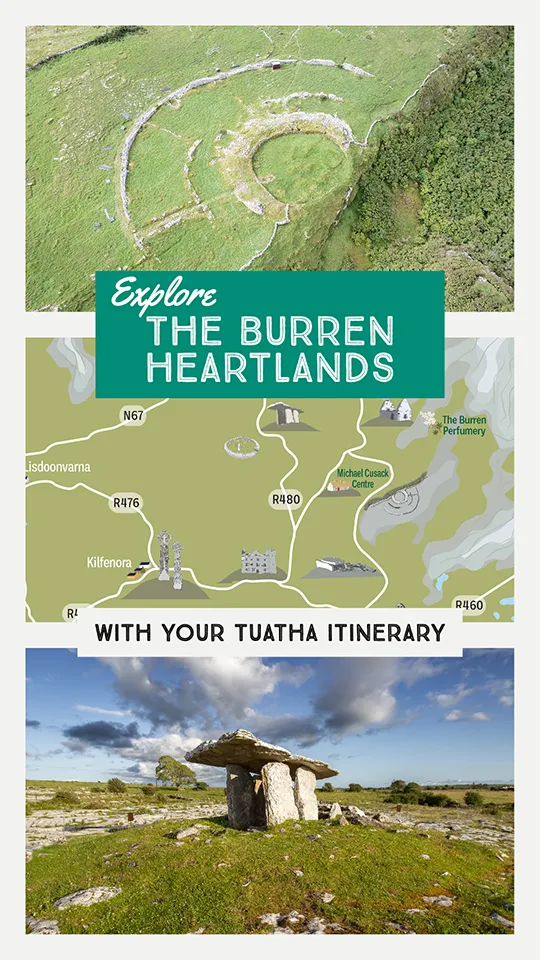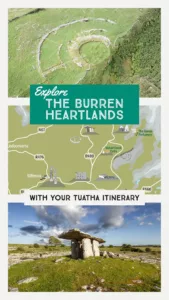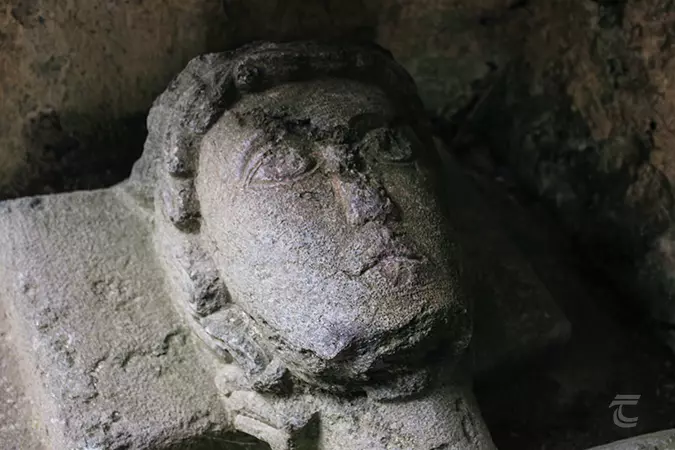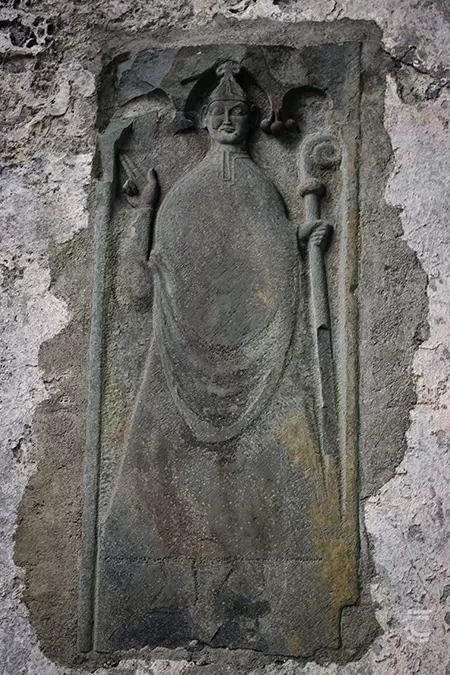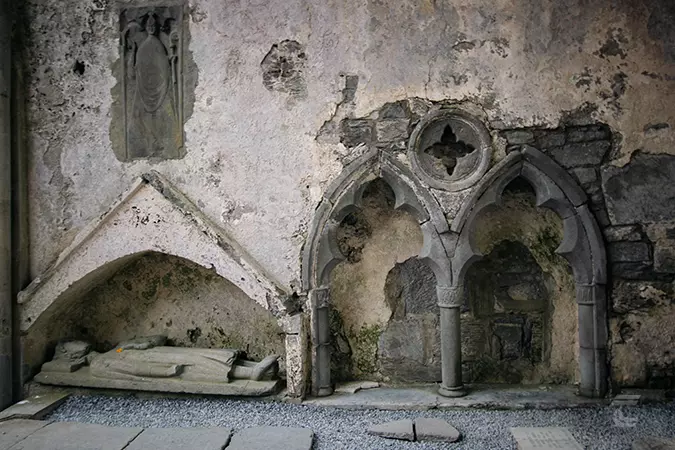Corcomroe Abbey
Corcomroe Abbey (Mainistir Chorca Mrua) was a Cistercian foundation situated in a green valley surrounded by the grey limestone landscape of the Burren. The Latin name for Corcomroe – Petra Fertilis (the Fertile Stone) – suggests that the valley was productive despite the stony surroundings.
Corcomroe Abbey is believed to have been founded by Donal Mór O’Brien, King of Thomond, in c.1194. It was home to a small community of monks who had originated from the Cistercian foundation of Inislounaght (close to Clonmel, Co. Tipperary). Today the church is the most significant visible evidence of the abbey. It dates to the early 13th century, and though smaller than other Cistercian churches, the quality of the stonework and architecture is still very high, particularly at the eastern end of the building where you can see carved capitals with delicate designs of flowers and decorative bases.
Outside the church and in the surrounding fields, partial remnants of other buildings associated with the abbey are also visible. These include the ruins of a gatehouse and fragments of the precinct walls. A small cemetery stands immediately outside the church and it is still in use today, a reminder of of how these venerable sites play a key role in their communities, centuries after their construction.
For practical information about visiting this site Click Here
Corcomroe Abbey (Mainistir Chorca Mrua) was a Cistercian foundation situated in a green valley surrounded by the grey limestone landscape of the Burren. The Latin name for Corcomroe – Petra Fertilis (the Fertile Stone) – suggests that the valley was productive despite the stony surroundings.
Corcomroe Abbey is believed to have been founded by Donal Mór O’Brien, King of Thomond, in c.1194. It was home to a small community of monks who had originated from the Cistercian foundation of Inislounaght (close to Clonmel, Co. Tipperary). Today the church is the most significant visible evidence of the abbey. It dates to the early 13th century, and though smaller than other Cistercian churches, the quality of the stonework and architecture is still very high, particularly at the eastern end of the building where you can see carved capitals with delicate designs of flowers and decorative bases.
Outside the church and in the surrounding fields, partial remnants of other buildings associated with the abbey are also visible. These include the ruins of a gatehouse and fragments of the precinct walls. A small cemetery stands immediately outside the church and it is still in use today, a reminder of of how these venerable sites play a key role in their communities, centuries after their construction.
For practical information about visiting this site Click Here
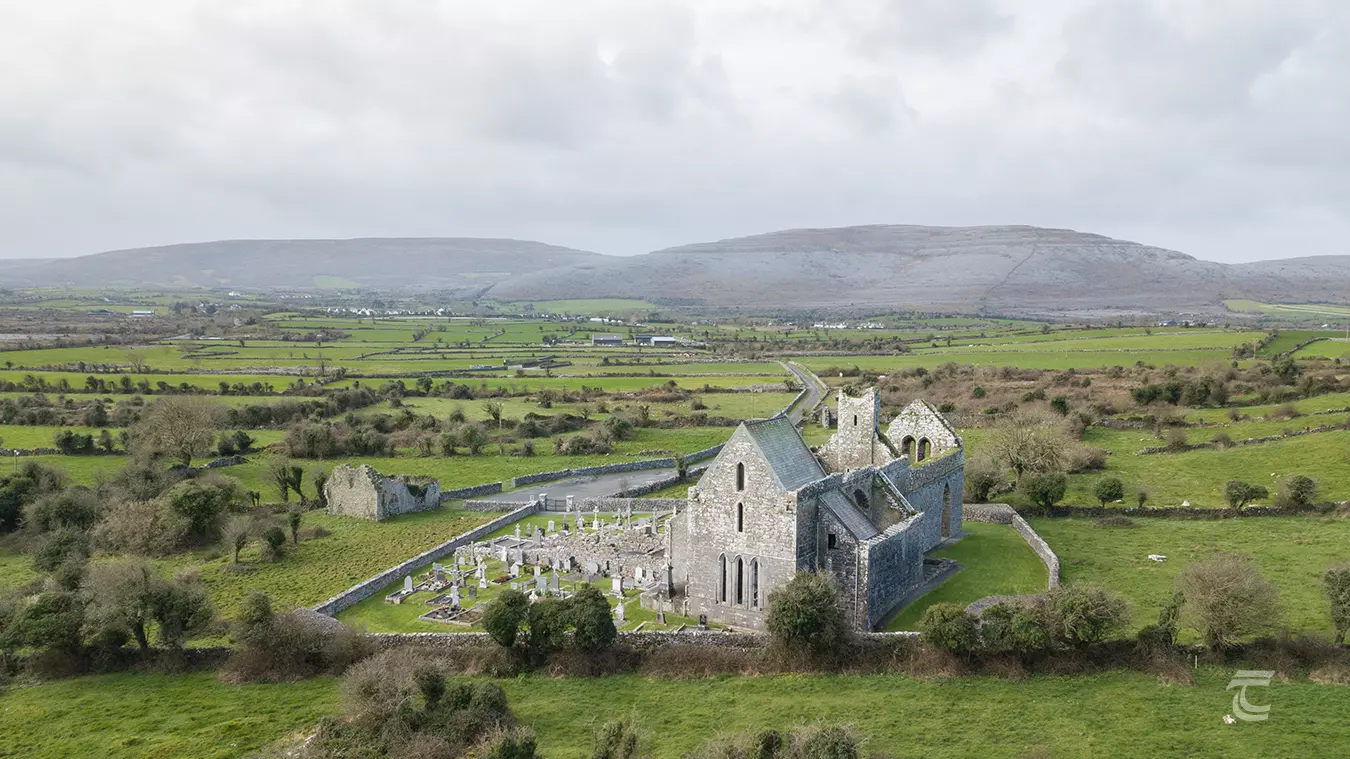
Aerial view of Corcomroe Abbey and the landscape of the Burren • Clare
The Reluctant King
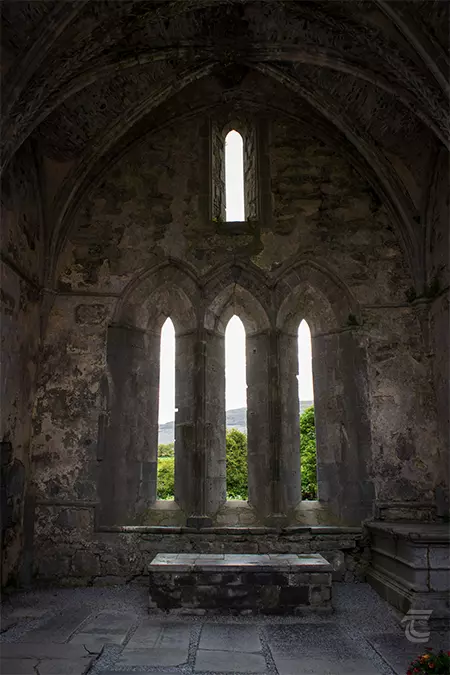
Interior of the choir of Corcomroe Abbey • Clare
The elegant architectural style at Corcomroe was the work of master stonemasons, collectively known as ‘The School of the West’. The roof has fine rib-vaulting with unusual herringbone design, which is uncommon in Ireland. On the south side of the chancel you can find a particularly fine example of a sedile – a recessed seat in the wall used by officiating clergy – with faint traces of paint on the remains of the surrounding plaster. At the base of the wall, the effigy of the King of Thomond, Conor na Suidaine O’Brien, lies in repose; a memorial to the King who was interred here in 1268.
Conor had ruled over Thomond for 26 years, though it is recorded that in the ‘latter part of his reign he was filled with despondency and no longer cared to play the king’. His death came at the hands of his cousin, Dermot, the son of Murtough O’Brien, at a place called Suidaine, near Bealaclugga (Bell Harbour, today). King Conor was on his way to enforce his authority over a number of rebellious local chiefs. However, he was met with an ambush by his cousin, who also slaughtered many of the king’s family, as described in the Annals of the Four Masters:
‘Conor Roe O’Brien, Lord of Thomond, Seoinin, his son, his daughter, his daughter’s son, i.e. the son of Rory O’Grady, Duvloughlin O’Loughlin, Thomas O’Beollan, and a number of others, were slain by Dermot, the son of Murtough O’Brien, for which he himself was afterwards killed; and Brian, the son of Conor O’Brien, then assumed the lordship of Thomond.’
This was another bloody episode in a deadly feud amongst the O’Briens that had been kindled by the Anglo-Normans and which would continue up until the 14th century. Conor was laid to rest in the abbey his grandfather had founded 74 years previously.
On the wall near the tomb of the King is an an effigy of an abbot. In contrast to the elaborate chancel area, the nave of the church is rather plain and austere, and may represent the financial difficulties that Corcomroe faced in later periods. In 1544, following the Dissolution of the Monasteries, the lands and abbey of Corcomroe were in the hands of Murrough O’Brien, a descendent of the O’Brien who founded the monastery some 350 years earlier.

Interior of the choir of Corcomroe Abbey • Clare
Upper left: the effigy of Conor na Suidaine O’Brien • Lower left: the northern wall of the choir • Right: the effigy of an abbot
Top: the effigy of Conor na Suidaine O’Brien • Middle: the effigy of an abbot • Bottom: the northern wall of the choir
